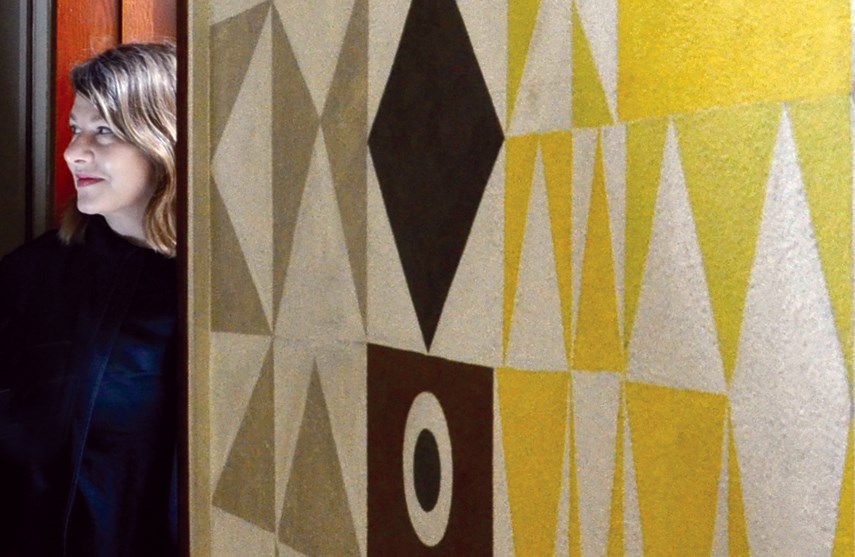The District of West Vancouver is being pitched on a plan that would see the historic Binning House restored and given permanent protection in exchange for new development on the lot. But heritage advocates say the proposal is a “worst case scenario” because it would effectively ruin the site’s heritage value.
Artist Bertram Charles Binning designed and built the home on Mathers Crescent in 1941. With its floor-to-ceiling windows, open concept, flat roof and large overhang, it is considered to be the first example of West Coast Modernism, a style that continues to influence architecture today.
“It’s like the DNA for West Coast Modernism and West Coast culture,” said Adele Weder, founder of the West Coast Modern League and interim editor of Canadian Architecture magazine.
Real estate agent Jesse Saniuk bought the home in 2015 after a protracted legal dispute that saw the property taken from an insolvent charity by the Binnings’ estate and then sold.
Saniuk is proposing to sever off the southern portion of the lot to build a 3,500-square-foot home as well as a garage and caretaker suite on Mathers Crescent. In exchange, he’ll pay to have the home restored to how it looked when Binning and his wife Jessie lived in it, including their original furniture and personal effects.
“No renovations, no updates. Just pure restoration,” Saniuk said. “Everything in the original house is being kept original and I think that is a one-of-a-kind project that West Vancouver and British Columbia has never seen before in a residential area.”
Saniuk said he would live in the new home and keep the restored Binning House as a private art gallery to keep the Binning estate’s collection as well as his own contemporary art pieces.
B.C. Binning’s widow Jessie stated in her will she wanted the home preserved and made available to the public for scholarly research, something Saniuk said was part of his plan.
“There will be availability for the public to see it on a semi-regular basis,” he said.
The total cost to restore the home isn’t known, Saniuk said, but the structural work alone would be in the hundreds of thousands of dollars.
The district has approved a number of similar heritage revitalization agreements in the last year.
But Binning’s careful design of the home would be lost and the heritage value with it, if the lot were to be subdivided and a new home built in front Weder argues.
“In general, I think HRAs are an excellent tool for many houses – not for this house. Not for the Binning House. It does not work. It is a worst case scenario,” she said. “It was his schtick, the way the windows are angled to the site and you descend into the garden.”

And agreeing to the HRA would mean council would have to renege on the heritage designation the Binnings put on the home in 1999, making it illegal to subdivide, build on, alter the property, or even let the house fall into disrepair. Going back on that would set a dangerous precedent and trigger a run on heritage properties by developers looking for infill density projects, Weder said.
“It will confirm people’s suspicions that municipalities are weak and powerless and do not try to defend heritage bylaws vigorously. It will confirm people’s suspicions and fears they’re at the mercy of speculators holding heritage properties for ransom,” she said.
Saniuk disagreed, saying the design he has chosen for the new home is meant to reflect Binning’s architecture. And it will feature a green roof. “It totally just blends into the property. … All you see from the Binning House is a green garden-like roof,” he said of the design. “Currently there is nothing on the lower part of the property. It’s been long overgrown for many, many years.”
When it comes to a public hearing, Weder said she will be lobbying council to reject the deal and negotiate with Saniuk for more density on another property elsewhere in the district in exchange for the home’s restoration and public access to the site.
“The district does not have to acquiesce to this. They can arrange for a deal that works better for the current owner that still benefits him financially,” she said. “Just say no. If it’s going to rot, it’s going to rot.”
The proposal is set to go before the district’s design review committee later this month, according to Jim Bailey, West Vancouver’s director of planning.
“I want to stress that the district has an incredibly strong interest. We think that the Binning House is an important and significant piece of architecture,” he said. “We first and foremost want to save the house.”



